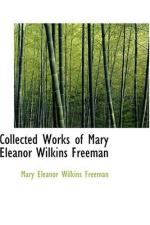|
This section contains 3,311 words (approx. 12 pages at 300 words per page) |

|
SOURCE: “Redefining Place: Femmes Covert in the Stories of Mary Wilkins Freeman,” in Studies in Short Fiction, Vol. 33, No. 1, Winter, 1996, pp. 69–77.
In the below essay, Daniel interprets Freeman's use of enclosure imagery.
In writing about women and their “place” in nineteenth-century New England society, Mary Wilkins Freeman frequently used images that emphasize the places, spaces, and environments occupied by her female protagonists. Settings typically include houses, porches, yards, churches, parlors, and kitchens—spheres in which the “True Woman” of the times could fulfill society's expectations of her and where the emerging “New Woman” could still serve in her duties to others rather than to herself. At first glance, one might assume that, “as a realistic recorder of the status and sensibility of the late nineteenth-century and early twentieth-century New England woman” (Reichardt xi), Freeman is simply perpetuating that century's stereotypical images of woman's limited “place.”
In addition, these...
|
This section contains 3,311 words (approx. 12 pages at 300 words per page) |

|


